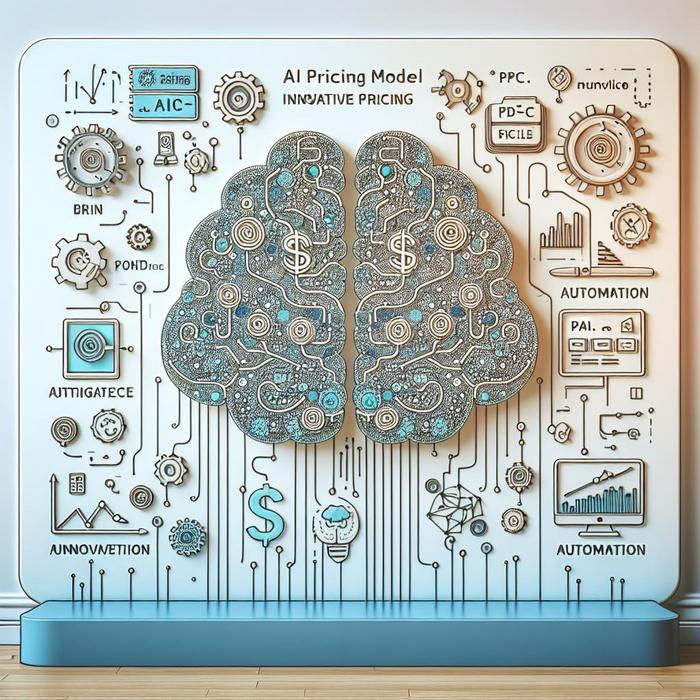Understanding the Potency of High-Impact Advertising Strategies
In the ever-evolving digital marketing environment, the significance of high-impact advertising strategies cannot be overstated. For seasoned business leaders vested with strategic decision-making, understanding the efficacy of such strategies is paramount to achieving business growth. After all, when leveraged effectively, these strategies can open up new pathways for cost-effective customer acquisition, augmented brand awareness, and an enhanced bottom line.
One such high-impact strategy that has made a substantial difference in the realm of digital advertising is strategic bidding, particularly in the context of Video action campaigns. Benchmarked by Google, this innovative approach empowers advertisers to optimize the total value of conversions rather than focusing solely on the conventional cost-per-click. This shift allows the advertisers to gain superior control over their ad spend, thus leading to a more efficient allocation of marketing budget.
TikTok vs Google: The Battle of Campaign Effectiveness
Digital platforms like TikTok and Google have emerged as the titans in the marketing world. With their unique video advertising formats and advanced targeting capabilities, these platforms have revolutionized the way brands connect with their target audience. However, a detailed comparison offers interesting insights into each platform’s potential strengths and areas of improvement.
For instance, Google’s Video action campaign is structured around proprietary bidding strategies. Most notably, it includes ‘Max Conversion Value’ and ‘Target Return on Ad Spend’ (tROAS) strategies. These strategies precisely align with the objective of maximizing the total value of conversions, causing many businesses to gravitate towards Google. Learn more about effective Google bidding strategies here.
However, TikTok, with its visually immersive and engaging short-form video content, offers a unique advantage. The platform’s algorithm displays content that matches users’ interests, creating an environment ripe for targeted brand awareness campaigns. This provides an opportunity for brands to increase their visibility and connect with millions of users worldwide.
Demystifying the ‘Auction’ Phenomenon
It’s important to clarify that both TikTok and Google function on an auction-based model, where advertisers bid for the visibility of their ads. Several factors, including the bid amount, impact the likelihood of an ad appearing before the target audience. Explore more about the auction dynamics here.
The ‘auction’ concept is fundamental to comprehend why cost-effective bidding strategies hold the key to achieving brand awareness objectives. By maximizing the value of each conversion, businesses can ensure they are getting the most out of their marketing investments, ultimately leading to more impactful campaigns.
Leveraging AI-Driven Insights for Precision in Campaigns
The successful implementation of cost-effective bidding strategies necessitates a deep understanding of AI-driven insights. These platforms use AI algorithms to predict the likelihood of a user responding to your ad and then adjust your bid accordingly in real time. This predictive capability is critical to succeeding in competitive digital advertising auctions, and it’s a part of a broader shift towards AI-driven marketing strategies that promise to revolutionize the marketing landscape. Discover more about AI-driven campaign insights here.
In summary, the strategic decision-makers at the helm of large companies must have a deep understanding of the workings of digital advertising platforms. Leveraging innovative strategies such as cost-effective bidding can empower them to drive brand awareness and business growth in a highly competitive landscape.
Meta Vs Google: Comparing Two Digital Giants
Our understanding of digital advertising platforms would be incomplete without speaking of Meta, previously known as Facebook. Serving as the cornerstone of a multitude of digital marketing campaigns, Meta offers different ad formats, including single image ads, video ads, carousel ads, and others.
Similar to Google, Meta brings forth a powerful bidding strategy that governs ad performance. This strategy pays critical attention to aligning one’s ad with users who are more likely to achieve the desired action, such as a purchase, making advertisers’ offerings more relevant and effective. However, Meta’s bidding strategy substantially differs from Google’s. Instead of focusing on gaining a strategic edge over competitors, it aligns bids with potential audience interest in an advertiser’s offerings. You can find an in-depth analysis of Meta’s bidding strategy here.
Embracing the Power of Ad Analytics for Optimized Bidding
As strategic decision-makers, executives must leverage the power of ad analytics for optimized bidding. An in-depth analysis of ad performance and audience behavior can provide advertisers crucial insights regarding what works best for their business. By continually refining their ad strategies based on these insights, businesses can maximize their marketing return on investment (ROI).
Moreover, sophisticated analytics can offer crucial insights into the most successful ad creatives, best performing demographics, accurate cost-per-conversion data, and so on, all of which are essential for improving campaign performance. To comprehend how advanced ad analytics can catalyze business growth, click here.
The Shift Towards Programmatic Advertising
The ongoing shift towards programmatic advertising is also noteworthy. Programmatic advertising involves automatic buying and selling of ad inventory in real-time, making ad transactions more efficient and less resource-consuming. By automating the bidding process, businesses can significantly enhance their ad campaigns’ efficiency and effectiveness.
Moreover, programmatic advertising allows businesses to break free from some traditional constraints, such as predefined ad spaces and formats, and engage customers more effectively. With programmatic advertising, businesses can leverage AI-driven tools to reach out to their audience across multiple devices and channels, thereby ensuring better reach and conversion rates.
Building and Preserving Brand Equity
In today’s information-dense digital landscape, it becomes essential not just to be seen by your audience but also to leave a lasting impression that strengthens your brand narrative. Strategic bidding, when used effectively, can help in building and maintaining brand equity.
By ensuring that your ads reach the audience most likely to resonate with your brand messaging, strategic bidding can elevate brand awareness and reputation. Furthermore, by targeting quality conversions, such strategies bolster brand loyalty, helping businesses solidify their position in their respective markets.
In conclusion, understanding the potency of different bidding strategies across different digital platforms can be instrumental in driving business growth and enhancing brand equity. Harnessing these strategies can empower decision-makers in large businesses to direct their marketing efforts effectively, encouraging impactful marketing outcomes.











